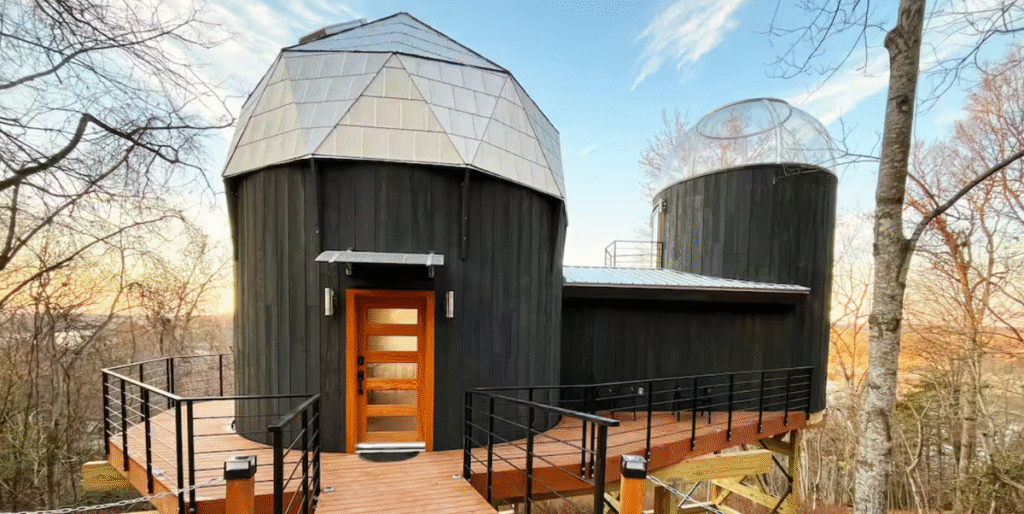I’m not sure when I first ran across the concepts of things like virtual reality and augmented reality. I think it may have been around the tail end of the 1960s when I read Way Station by Clifford D. Simak.
Simak’s science fiction stories have a style of their own. His tales often take place in rural America, particularly the Midwest, and reflect an abiding affection for nature and simple living (some fans affectionately describe Simak’s books as “science fiction with cows”).
Another aspect of Simak’s writing is that it carries a fundamental optimism and belief in the potential goodness of thinking beings, both human and alien. His characters tend to be kind, curious, and morally grounded, which makes a nice change.
A high-level view of Way Station’s plot is that we join things in the middle of the 20th century. Our hero, whom the world sees as a young man called Enoch Wallace, was actually born more than 100 years earlier, in 1840. He lives in a remote farmhouse, secluded and nestled in the rural Wisconsin countryside, with a surrounding forest that provides privacy.
Shortly after the American Civil War, in which Enoch served, an alien recruited him to operate a way station for interstellar travelers, who occasionally “beam in” (materialize), stay for a while, and then “beam out” again. From the outside, the farmhouse looks the same as it did when Enoch’s father built it, but the aliens have converted it into an impenetrable fortress, including vast caverns hollowed out of the hill under the house.
The reason I mention all this here is that there’s a memorable scene in which Enoch uses an alien training device—a kind of virtual reality shooting range—located beneath his house in the station’s underground facilities. Enoch enters a special chamber where he trains with an advanced simulated weapon system. The setup projects hyper-realistic combat scenarios featuring bizarre terrains and alien creatures. These scenarios are not just visual and auditory but full immersive simulations that test his reflexes, accuracy, and decision-making under pressure.
Why do I say this was memorable? Well, I still remember it all these years later, although I have admittedly reread this book multiple times since. If you’ve not read Way Station yourself, I’d put it close to the top of my “must-read” list.
I think the first time I saw a visual depiction of something like this would have to be the holodecks that were introduced in Star Trek: The Next Generation (TNG). These provide fully immersive, three-dimensional environments using holographic projection, force fields, and replicator technology, providing a vision of virtual reality taken to its extreme.
Now, just to make sure we’re all tap-dancing to the same skirl of the bagpipes, let’s remind ourselves of some of the terms involved in the reality-virtuality continuum as illustrated below.

The reality-virtuality continuum (Source: Clive “Max” Maxfield)
At one end of the spectrum, we have the real world, which we might dub physical reality (PR). At the other end, we have virtual reality (VR), in which everything we see and hear is computer-generated. As I said in one of my Cool Beans Blogs (see What the FAQ are VR, MR, AR, DR, AV, and HR?):
Augmented reality (AR) refers to an interactive experience of a real-world environment in which the objects that reside in the real world are enhanced by computer-generated perceptual information, sometimes across multiple sensory modalities, including visual, auditory, haptic, somatosensory, and olfactory.
Diminished Reality (DR) is the complement of AR. As opposed to adding information or stimuli to a real-world scene, DR involves removing or diminishing information or stimuli from the real world.
As opposed to augmented reality, in which objects and scenes in the real world are augmented with computer-generated information, augmented virtuality (AV) refers to augmenting virtual environments with real-world objects or people.
Mixed reality (MR) refers to the merging of real and virtual worlds to produce new environments and visualizations, where physical and digital objects co-exist and interact in real time. Mixed reality does not exclusively take place in either the physical or virtual world but is a hybrid of reality and virtual reality.
I was at the front of the queue when the consumer version of the Oculus Rift hit the streets in 2016, and that was “only” VR. Today, I bask in the glow of the MR capabilities of my Meta Quest 3 headset, knowing that this is just a tempting teaser of what is to come (I’d love to have an Apple Vision Pro headset, but that’s way outside my price range).
On the one hand, the world is a beautiful place. Well, it is when we are talking about nature and landscapes boasting mountains, lakes, forests, seas, and skies. Sadly, much of the world I experience on a day-to-day basis involves human-made environments that are often battered, grimy, and grubby, if the truth be told. I’m reminded of the classic Hyper Reality video on YouTube (even if you’ve seen this before, it’s well worth watching again).
I’m thinking about how brightly colored the cityscapes are in this video. In particular, the vibrancy of the supermarket scene that kicks off around the 2-minute mark. Contrast this with how dull and boring things become when the system crashes around the 4-minute mark, at which point we realize we are in a regular store.
All of which brings us to the point of this column (yes, of course there’s a point), which is that I was just chatting with Aidan Wolf and Kevin Habic, who are two of the co-founders of DreamPark, which recently secured $1.1M in seed funding to transform real-world spaces into mixed reality theme parks (see the press release).
Their long-term goal is to “build the world’s largest theme park—one that exists everywhere and is accessible to everyone.” I’m thinking of something like Ready Player One, but taking place in a mixed reality world rather than a virtual reality environment.
I remember when the Pokémon augmented reality phenomenon called Pokémon GO reached its peak popularity circa 2016 (it remains hugely active to this day, with millions of dedicated players worldwide). This blends real-world locations with digital creatures using smartphone-based augmented reality. My wife (Gigi the Gorgeous) and my son (Joseph the Clueless) would demand that we all leap into my car and drive somewhere like the grounds of our local library because they’d been alerted that a rare Pokémon character had been spotted there. At that time, I didn’t see what they saw in this (no pun intended), but I do now.
For example, the first thing that got me hooked on the DreamPark concept was when Aidan asked if I liked walking for exercise. I do, but I have to admit that I get bored, even when I’m listening to an audiobook using my bone conduction headphones, thereby leaving my ears free to detect any zombies approaching me from behind (you can’t be too careful where I live).
Aidan asked me to imagine taking the same stroll around my neighborhood, but this time wearing a mixed reality headset and carrying a lightsaber in my hand. I can imagine this, and I must admit that defending myself against a horde of imperial troopers whilst ambling along would make exercising much more exciting.
Sadly, that’s for the future. The current state-of-play is that DreamPark allows users to experience mixed reality theme park adventures in specific real-world locations. DreamPark’s platform can create engaging and interactive experiences by overlaying digital content onto the physical environment.
Consider this tweet from Aidan in which he says: “Just installed the first public Dream Park access point on Third St Promenade, turning the entire street into a game, coming soon to Quest 3 with camera access! First of many AR theme parks we’ll be setting up all over the world!”
just installed the first public Dream Park access point on Third St Promenade turning the entire street into a game, coming soon to Quest 3 with camera access! First of many AR theme parks we’ll be setting up all over the world! pic.twitter.com/aYY1qpWsWD
— aidan (@Aidan_Wolf) May 5, 2025
As you’ll see, the user, who is wearing a Quest 3 headset in passthrough mode, starts by looking at a regular street scene. Then the user looks down at a special access point (QR code) mounted on the pavement. This triggers digital overlays to appear in specific locations. Suddenly, the street is filled with vibrantly colored objects with which the user can interact. O-M-Goodness gracious me. I would really like to try this for myself!
I’m not sure if this really relates, but I’m thinking of the line “All the world’s a stage, and all the men and women merely players” (William Shakespeare, As You Like It, Act II, Scene VII, Line 139). Now I’m thinking of a world in which people aren’t simply walking around “to get from here to there,” but are instead jumping up and down and interacting with invisible (to the rest of us) objects. And now I’m wondering what The Bard would have thought about all this.
Speaking of “invisible (to the rest of us) objects,” one important point to note is that what we’ve talked about here is just the beginning. I can easily envisage taking this to the next level (again, no gaming pun intended), in which everyone is sharing a common mixed reality experience, all seeing and interacting with the same objects.
All this has left (what I laughingly call) my mind wobbling on its metaphorical gimbals. Thoughts are ricocheting around my poor old noggin, each triggering a cascade of concepts. How about you? Do you have any thoughts you’d care to share on any of this?
Related


